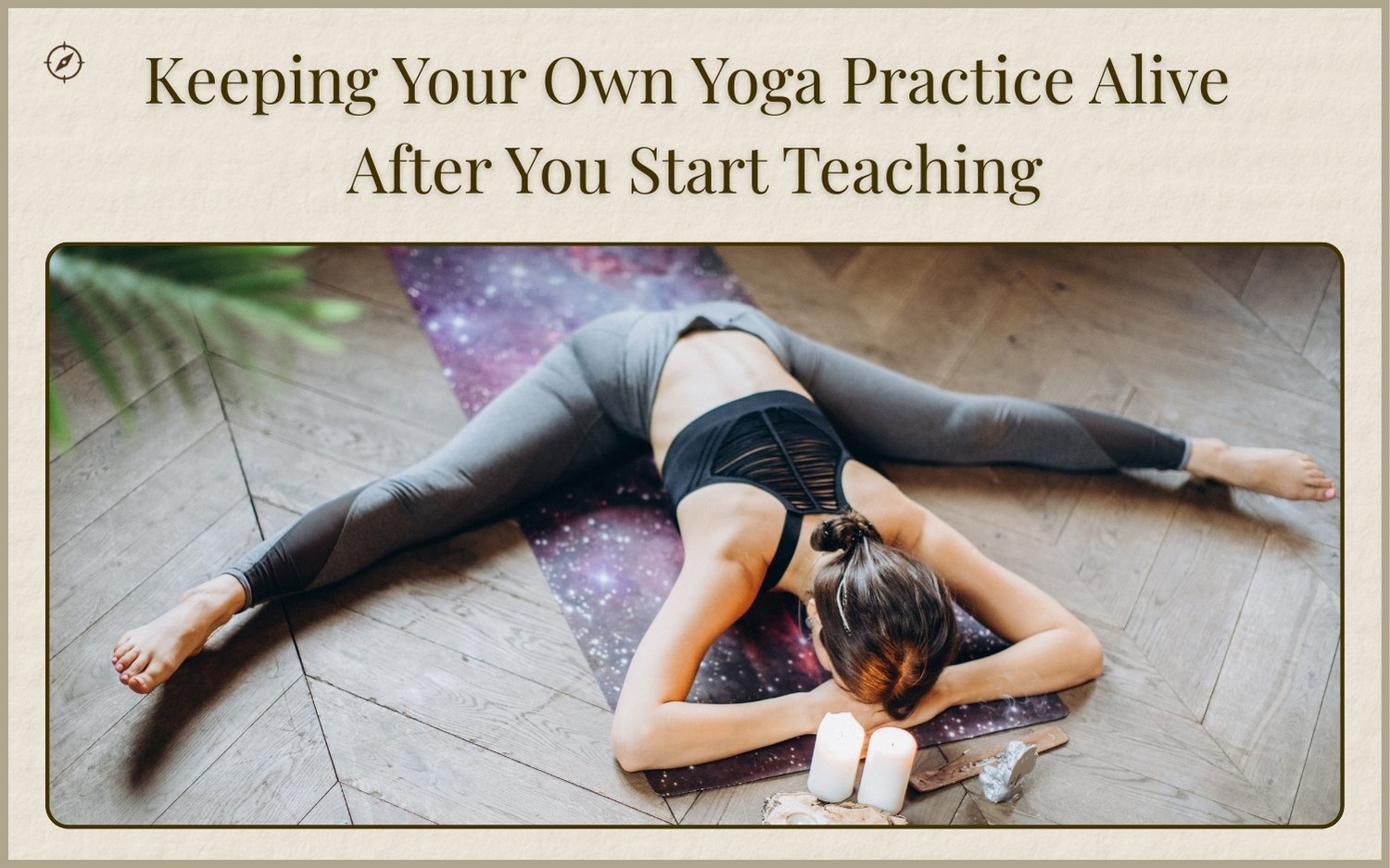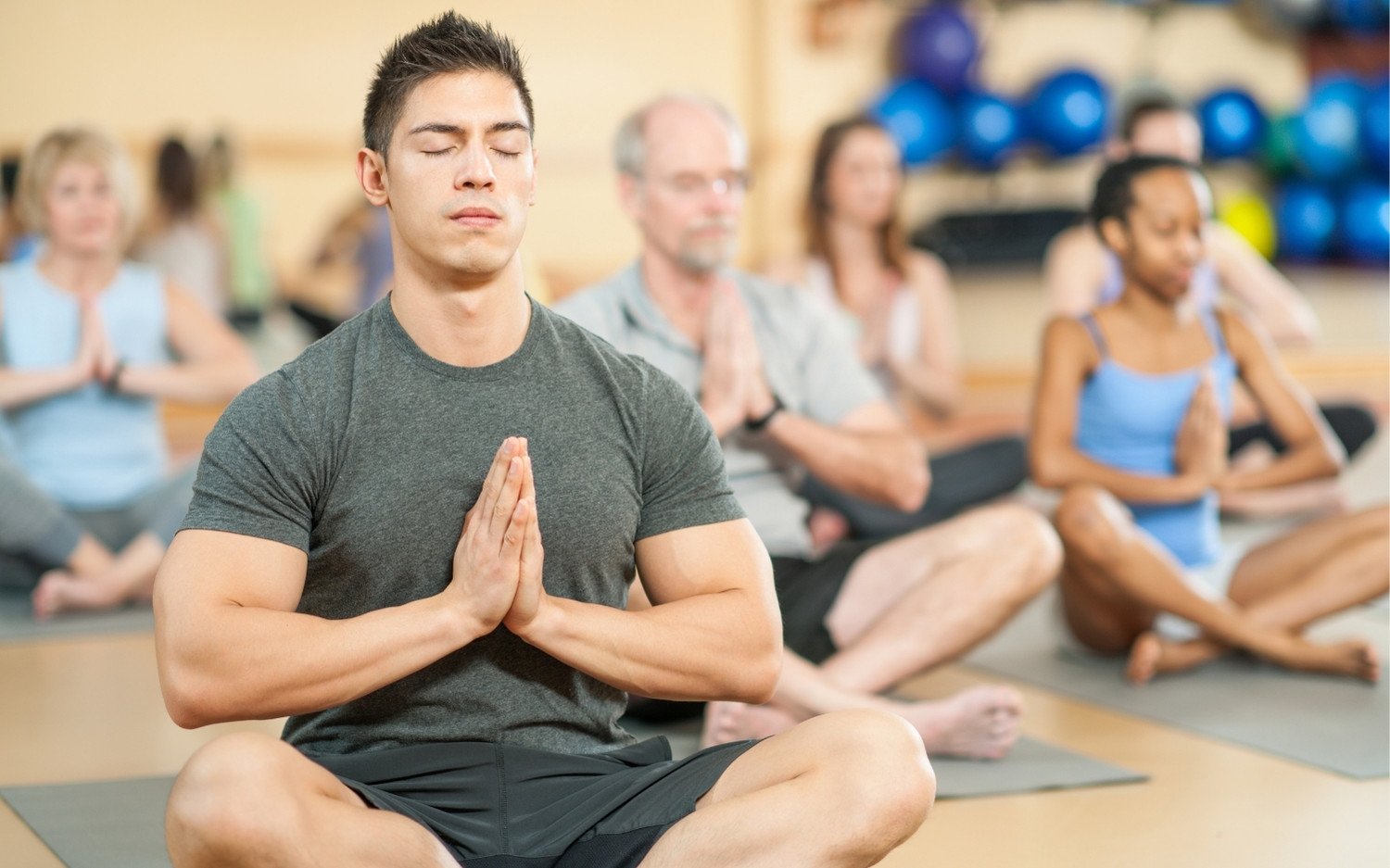Keeping Your Own Yoga Practice Alive After You Start Teaching

When you first start teaching yoga, it can feel like your personal practice will naturally grow alongside your teaching. In reality, many new teachers find the opposite happens. Your energy goes into sequencing classes, supporting students, and managing schedules, leaving little time for your own mat. This spoke in The Ultimate Guide to Yoga Teacher Training: Challenges and How to Overcome Them explores how to keep your own yoga practice alive after you start teaching. By staying consistent, protecting your time, and adapting to your needs, you can continue to grow as a practitioner while thriving as a teacher.
This article is part of The Ultimate Guide to Yoga Teacher Training: Challenges and How to Overcome Them
If you haven’t read the main guide yet, start there to explore all 15 topics and get the complete picture for your YTT journey.
Make Peace with Shorter Practices
Your personal practice will not always look like a 90-minute flow. Some days it will be 10 minutes of gentle stretches or breathwork before class. That is still valuable. Release the guilt over “not doing enough” and instead focus on simply showing up. A short practice maintains momentum, keeps your body connected, and nurtures your mind even on busy days.
Quick tips:
- Have a go-to 10-minute sequence ready for time-crunched days.
- Use a timer so you can focus without checking the clock.
- Let it be enough.
Build a Consistent Routine

One of the most effective ways to keep your own yoga practice alive is to create a clear routine. Consistency makes practice less negotiable. Whether it is early morning before the day begins, a mid-afternoon reset, or a Sunday ritual, pick a time that works for you and stick to it. Seek to understand the importance of Sadhana.
You can also anchor your routine with a specific space or ritual. Light a candle, put on music, or roll out the same mat each time. These cues train your mind to settle into practice more easily.
Adapt to Your Energy and Needs
Your practice should meet you where you are. If you are tired, focus on restorative postures, meditation, or yoga nidra. If you are energized, enjoy a stronger vinyasa flow. This adaptability prevents burnout and keeps practice sustainable.
Try using a simple question before each session: What do I need most right now? Let the answer guide your approach.
Practice for Yourself, Not for Your Classes
It is tempting to use personal practice time to brainstorm sequences or test out transitions for upcoming classes. While that has its place, your personal mat time should be for you alone. This is where you recharge, reconnect, and deepen your own relationship with yoga. Protect it from becoming a work session.
Reconnect as a Student

Step into other teachers’ classes from time to time. Experiencing yoga as a student helps you rediscover joy, learn new approaches, and stay connected to the wider yoga community. It also provides a space where you can fully let go of the “teacher role” and simply receive.
Consider adding a monthly “student day” to your calendar.
Set Boundaries Around Teaching and Commitments
Overbooking yourself can quickly crowd out your personal practice. Be mindful of how many classes, workshops, or side projects you take on, especially in your first year of teaching. Saying no is not selfish, it is a way to protect the quality of both your teaching and your personal well-being.
Explore New Dimensions of Practice
Your personal yoga does not have to be limited to asana. Include meditation, chanting, pranayama, philosophy study, or journaling. This keeps your practice fresh and aligns with yoga’s deeper roots.
Keep a Practice Journal
A simple notebook can become a valuable tool for reflection. Record what you practiced, how you felt, and any insights that arose. Over time, you will see patterns, progress, and areas for exploration.
Stay Connected to a Supportive Community
Accountability and encouragement go a long way. Surround yourself with peers and mentors who value personal practice. Consider forming a small group that practices together weekly or checks in regularly.
Final Thoughts
Keeping your own yoga practice alive after you start teaching is a long-term commitment to your growth as both a teacher and a human being. By staying flexible, protecting your time, and honoring your needs, you can continue to evolve in your own practice while inspiring your students.
If you are working toward your first year of teaching or want more tools for staying balanced, explore The Ultimate Guide to Yoga Teacher Training: Challenges and How to Overcome Them
You can also check out related pages like Your First Year Teaching Yoga: What No One Tells You About Money, Marketing, and Motivation for more practical guidance.
